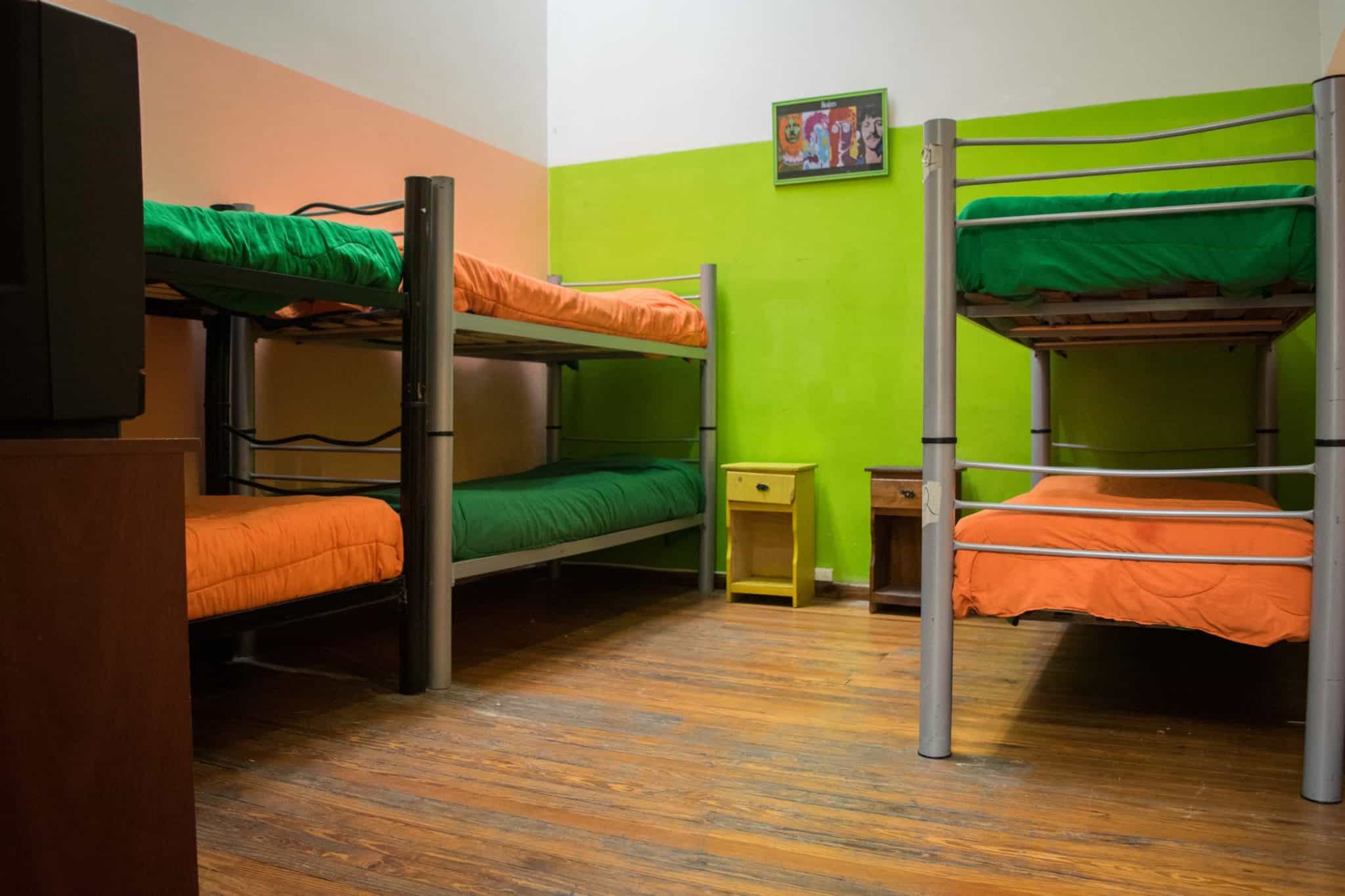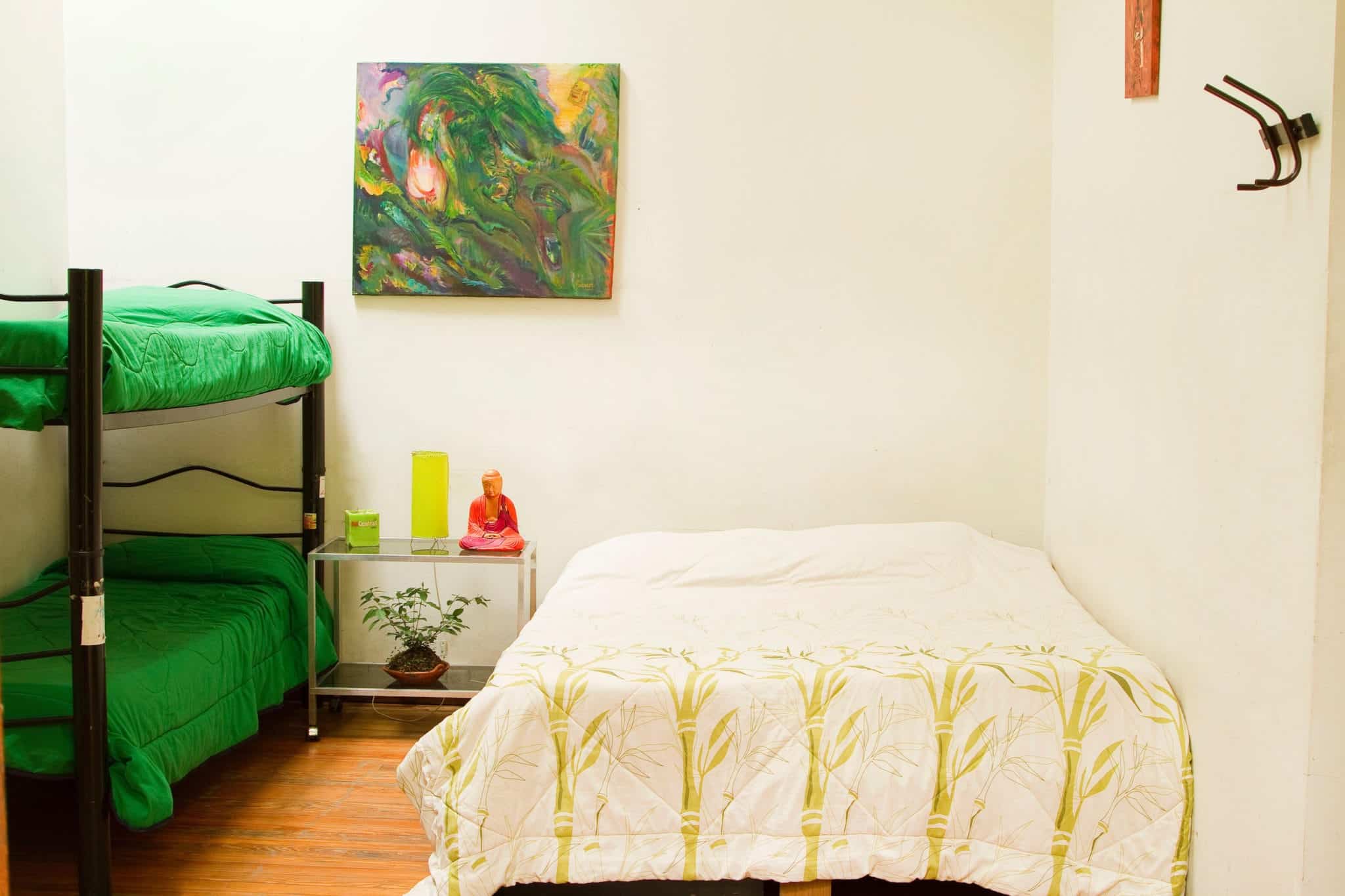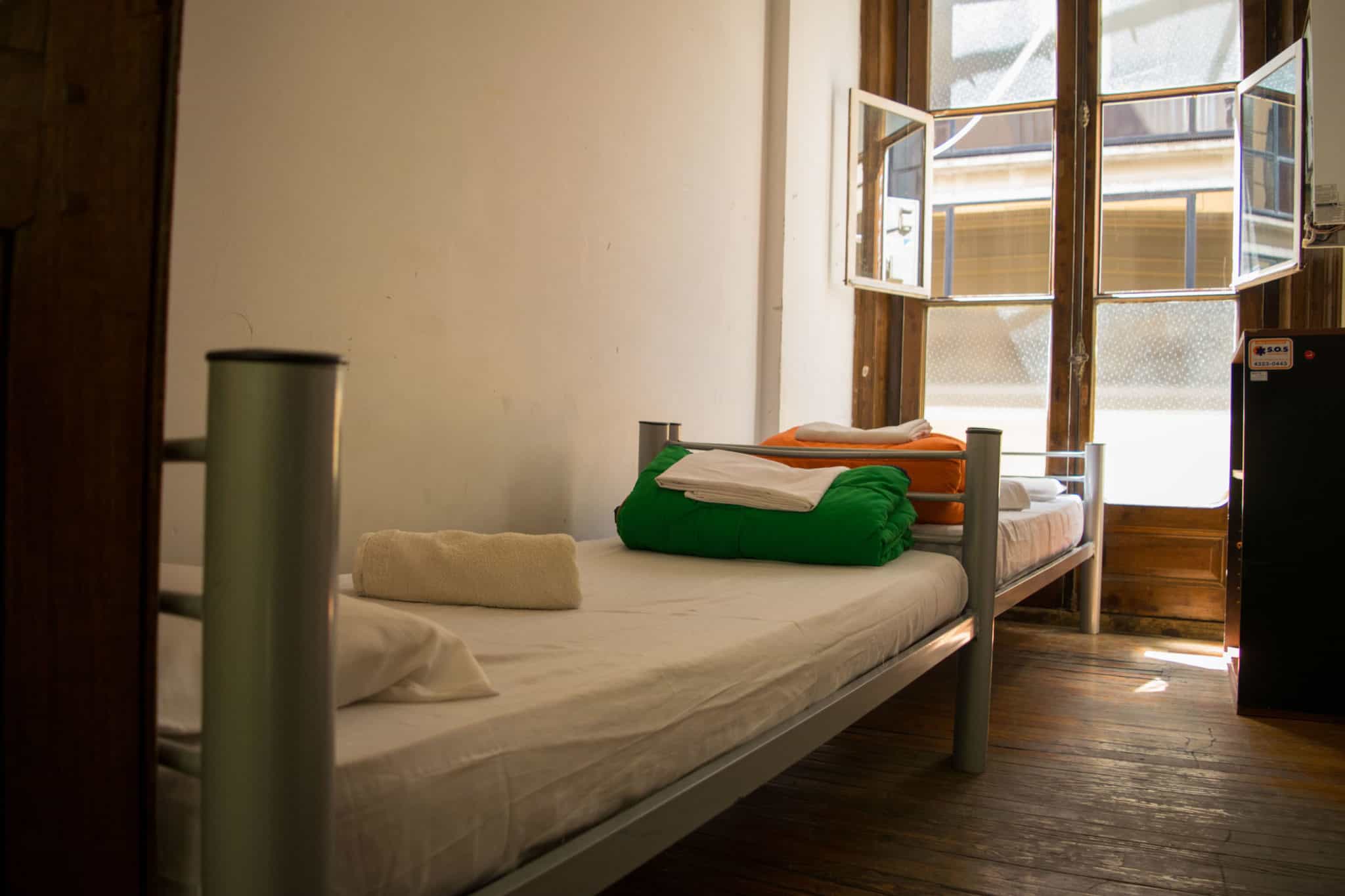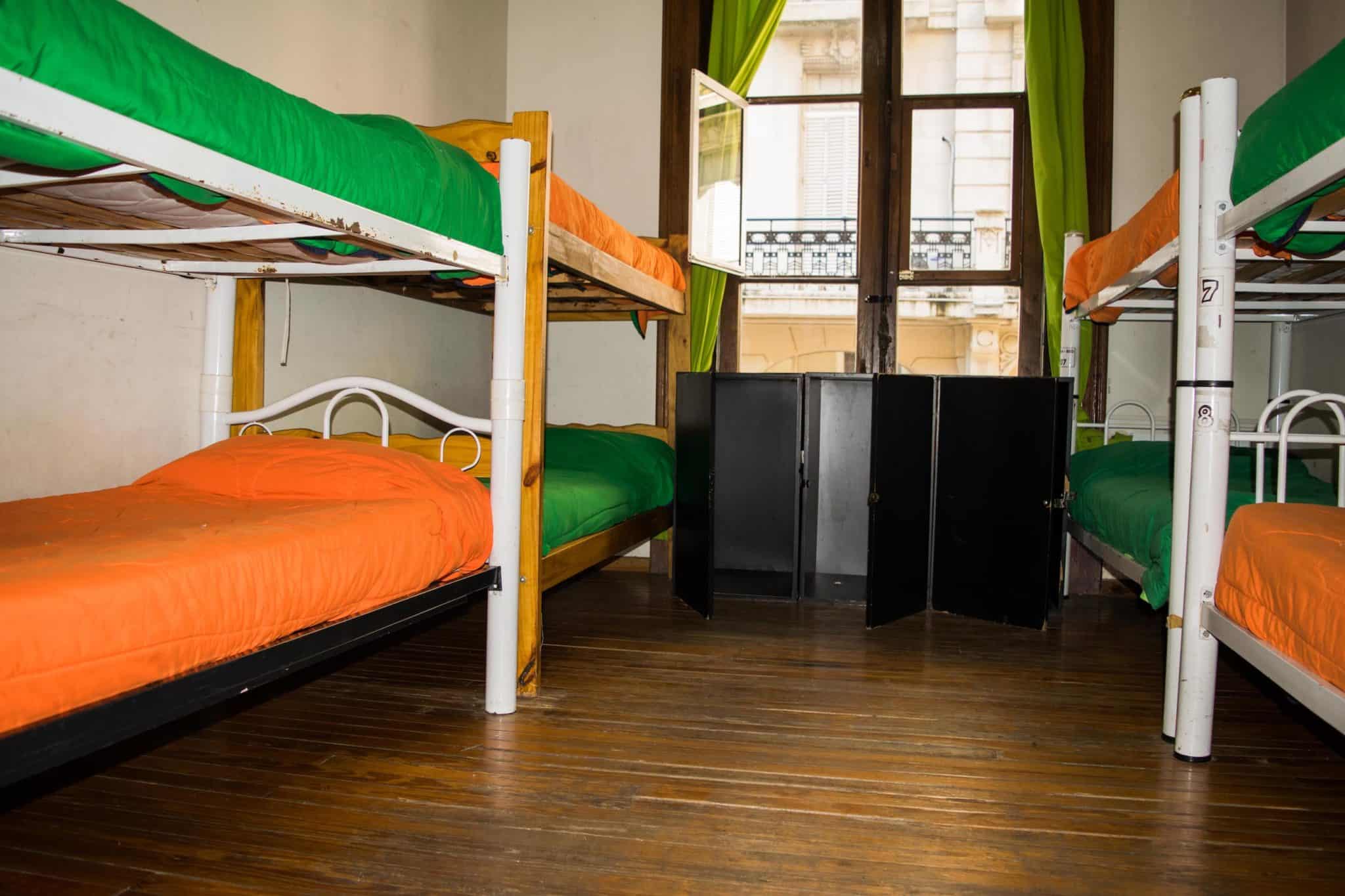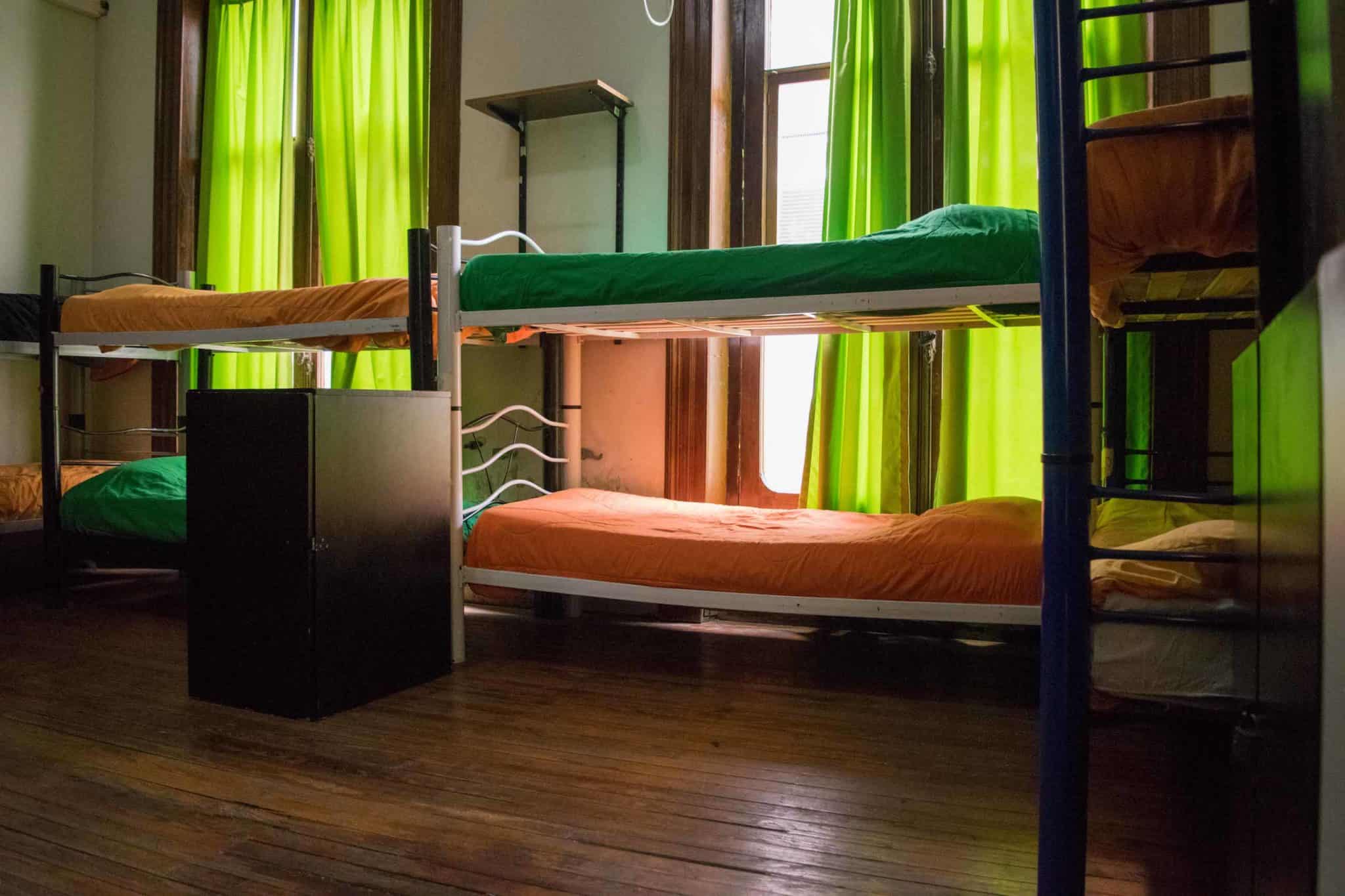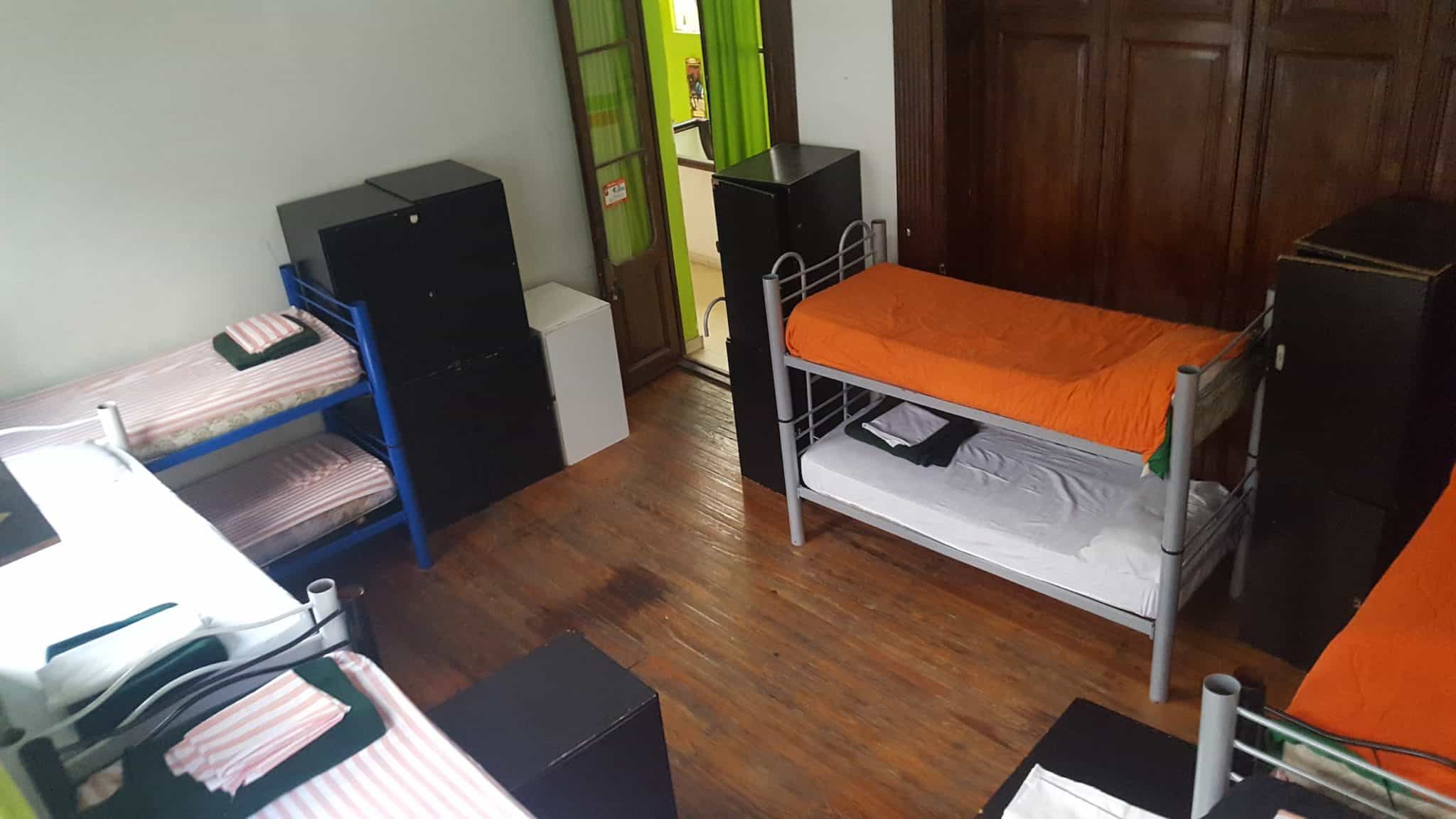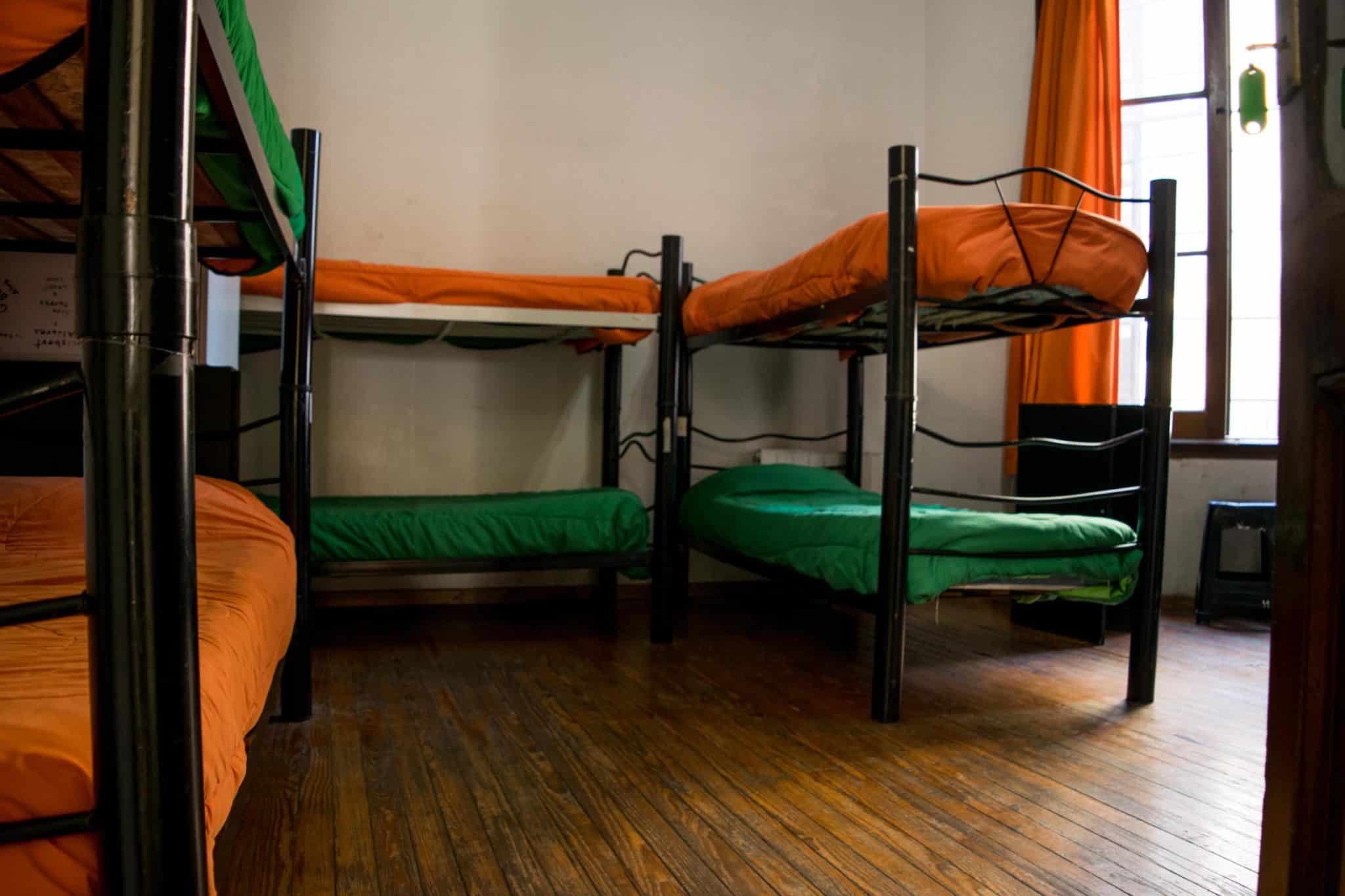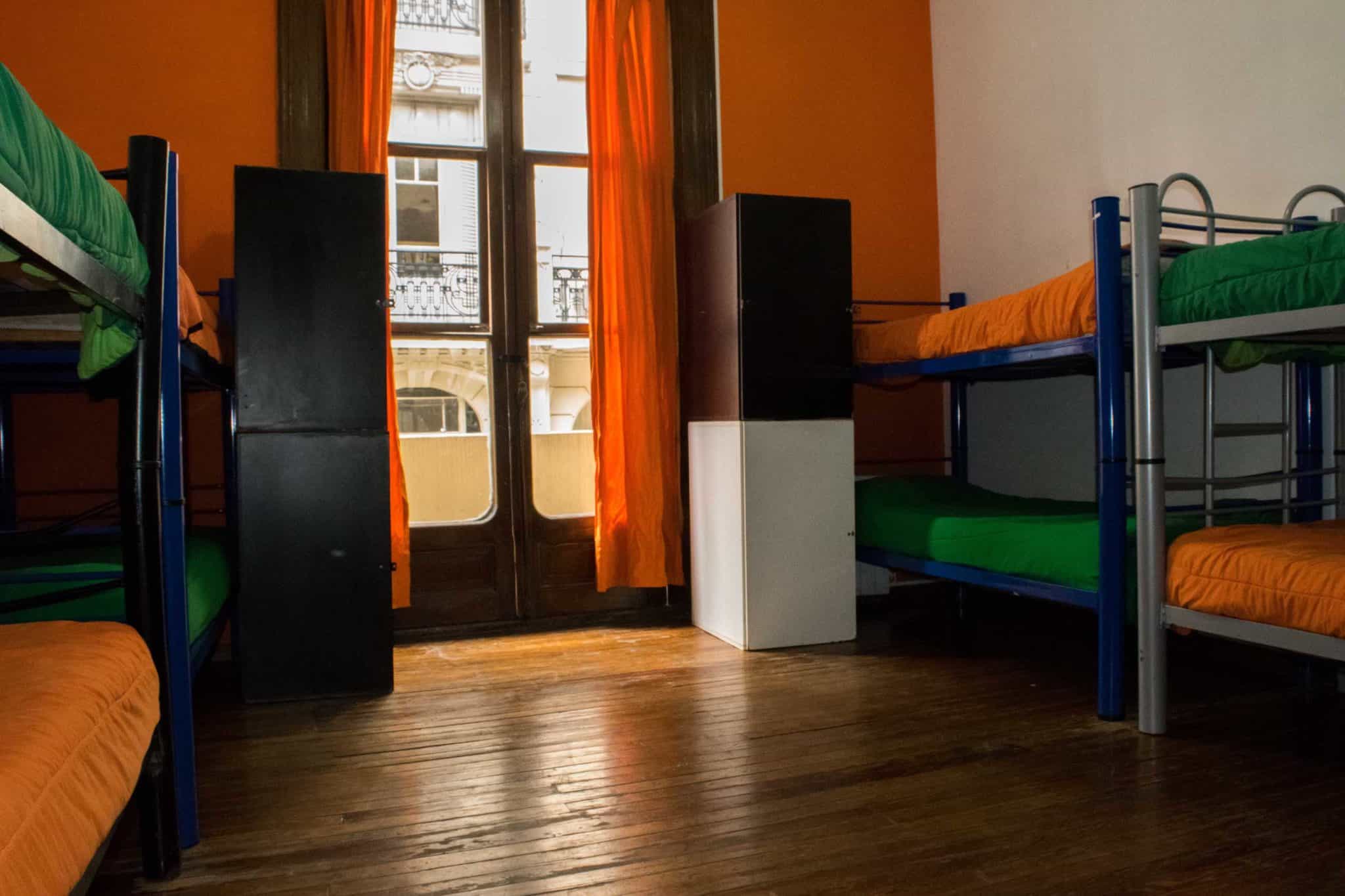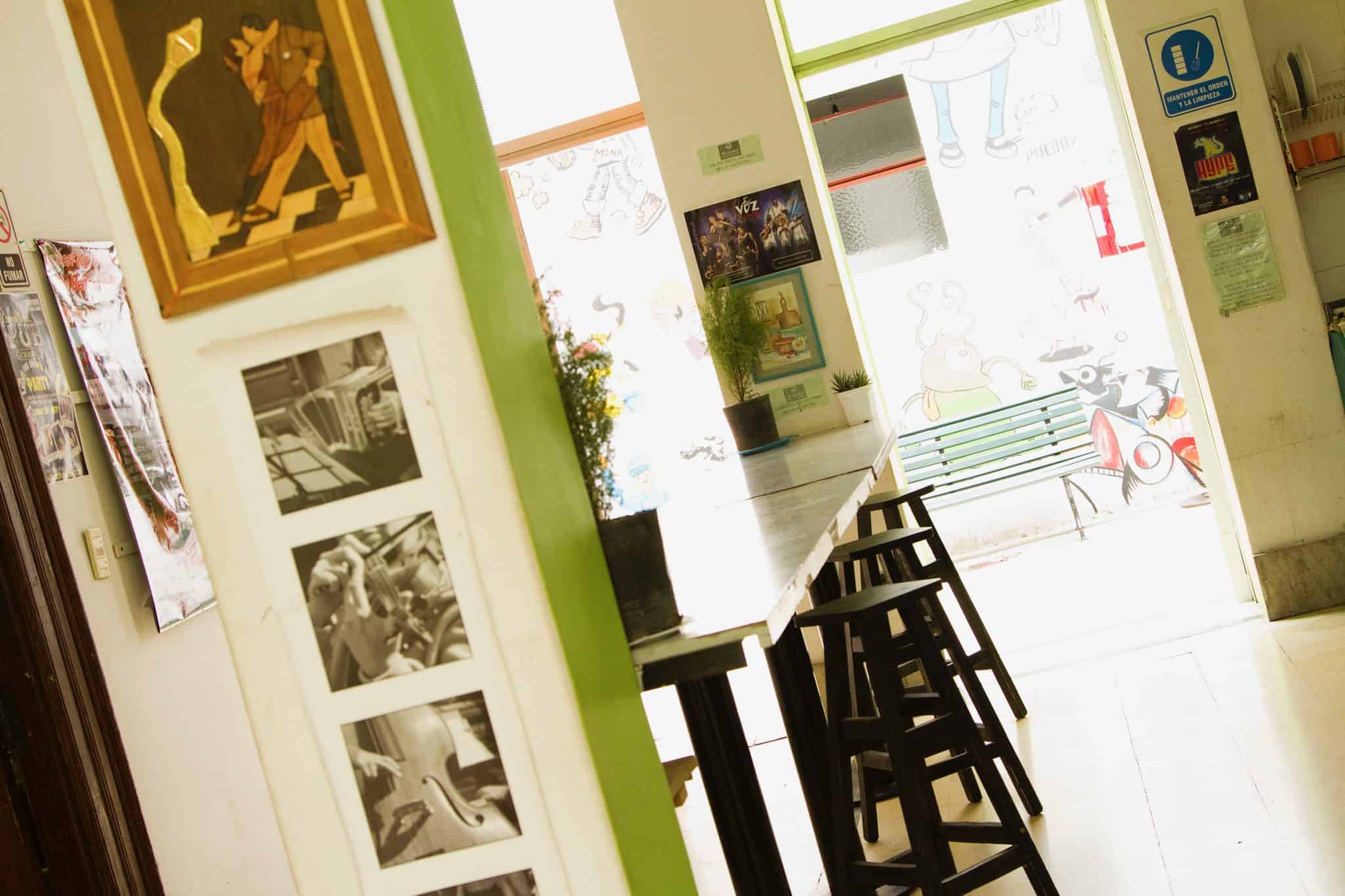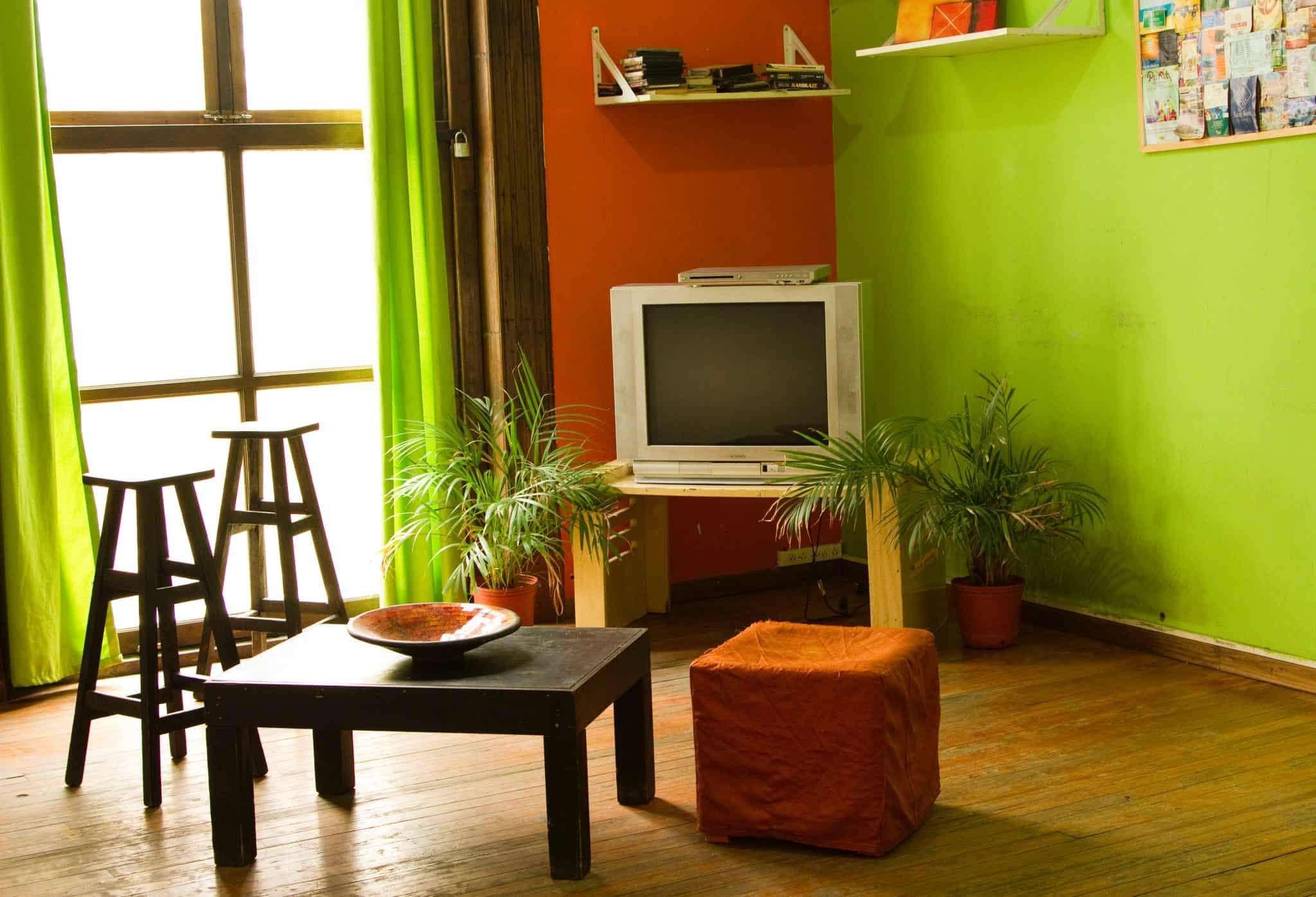The 06 Central Hostel tempts you to come experience Buenos Aires.
Nueva Pompeya is a southern proletarian neighborhood which is soaked with the Tango culture. It was here that many of the first tangos were written and performed for the first time.
Homero Manzi, the legendary tango composer, was inspired in Nueva Pompeya when he wrote the famous tango “Sur”. The lyrics describe a melancholic landscape that defines, even up to these days, much of the district’s features.
The name Nueva Pompeya was given by the people who worshiped the Virgin of the Rosary of Pompeya. The church was raised in 1900 by Capuchin monks. Until that moment the area was often known as “district of the Frogs” meaning in the Buenos Aires slang the street-smart man.
1. Plaza Nueva Pompeya (Square)
Av. Sáenz and Traful. (Av. Sáenz street 900)
“Pompeya” was not incorporated into the Capital City until 1887. In 1900, the Capuchin monks dedicated a chapel to the Virgin of the Rosary of Pompeya and ended up baptizing the neighborhood. The “Plaza Nueva Pompeya” is the heart of the area. It is surrounded by banks, public institutions and shops.
There is a giant painting in honour of the legendary composer Homero Manzi (1907-1951, author of: “Barrio de tango”, “Arrabal”, “Desde el alma”, “¡Che bandoneón!”, “Fuimos”, “Malena”, “El último organito,” and “Sur,” among many others) right next to the headquarters of the Bochín Club. In this club men use to gather to play “Tute”, “Truco”, “Mus”, Dominoes and Chess. Over Sáenz Avenue and Perito Moreno there is a fair that takes place on Sundays known as “Feria de los Pájaros” (Birds’ Fair) where you can see and buy different kinds of birds.
Buses: 9, 15, 28, 32, 42, 44, 46, 75, 76, 85, 91, 112, 115, 128, 135, 160, 165, 177, 178, 179, 188.
2. Santuario Virgen del Rosario (Sanctuary/Church)
Esquiú 974
The church of Our Lady of Pompeya is one of the most popular in the city. Its construction dates from 1900, it has stained-glass windows with pointed-arch shapes that symbolize the Holy Rosary’s fifteen mysteries. This is a very good expression of the local Gothic style
Buses: 9, 15, 28, 32, 42, 44, 46, 75, 76, 85, 91, 112, 115, 128, 135, 160, 165, 177, 178, 179, 188.
3. Museum “Nelly Nistal” and Athenaeum of Historic Studies of Nueva Pompeya
Av. Sáenz 971
Nelly Nistal was the founder of the Museum, she wanted to bring together paintings, engravings and documents that would reflect the history of the neighborhood. There are manuscripts from Julio de Caro and Cátulo Castillo among others available in the museum.
Buses: 9, 15, 28, 32, 42, 44, 46, 75, 76, 85, 91, 112, 115, 128, 135, 160, 165, 177, 178, 179, 188.
4. Plazoleta José Dames (Square)
José Damé was the composer of the Tango lyric “Fuimos” with music by Homero Manzi. The square “Nueva Pompeya” was built in his honour.
Buses: 9, 15, 28, 32, 42, 44, 46, 75, 76, 85, 91, 112, 115, 128, 135, 160, 165, 177, 178, 179, 188.
5. Esquina de los poetas (Poets’ Corner)
Av. Centenera and Tabaré
This corner is mentioned in the Tango “Manoblanca” by Homero Manzi. There is a bust representing the poet and a mural with the traditional “fileteado” that presents the mentioned Tango lyric. A collection of portraits of the city’s most influential figures done by León Untroib is available in the “Museo Manoblanca”, he portrayed Carlos Gardel, Homero Manzi, Julio de Caro, Benito Quinquela Martín,Tita Merello, and Aníbal Troilo.
You can also take a look at a mural created by Jorge Muscia that pays tribute to Homero Manzi. The famous corner “La esquina del herrero, barro y pampa” (quoted from the Tango “Sur”) is not so far from here.
Buses: 6, 42, 44, 46, 135, 150 y 193.
6. “Sur, paredón y después…”
Murales. Centenera 3150
Manzi lived in Nueva Pompeya between the years 1921 and 1924, twenty-five years before he composed the celebrated lyrics through which he reminisce an old love. You can visit the famous “paredón” (big wall) that is recalled in “Sur” the very same one referred to as Luppi’s “Curtiembre y Charolaría” (Tannery and leather shop) and one of the oldest in the country.
In the lyrics (“Pompeya y más allá la inundación”) he makes reference to the the period where the low-structured area suffered frequent floods.
The murals illustrate the history of the place. The first one by Chilo Tulissi reminisces the constant floodings that happened at the beginning of the 22th Century. The second one by Guillermo Palazón and Daniel Gatica portrays the Sáenz Avenue in the 1930’s. Finally the one painted by Francisco Panarisi gives life to the old Luppi’s Tannery, opened in 1873.
Buses: 6, 42, 44, 46, 135, 150 y 193.
7. Greek Orthodox Church
1418 Int. Francisco Rabanal Avenue
In Buenos Aires the Greek Orthodox cult is practiced at the “San Nicolás” Temple. This building is also the house of the Greek Association “Panelinion” which was established by the Greek immigrants. It has an eclectic style with Greek decorations inside.
Buses: 9, 15, 28, 32, 42, 44, 46, 75, 76, 85, 91, 112, 115, 128, 135, 160, 165, 177, 178, 179, 188.
8. “La Blanqueada”
Int. Francisco Rabanal Avenue and Sáenz Avenue
“La Antigua Blanqueada” was a local store which was surrounded by piles of cows’ bones that were killed before arriving to the Parque Patricios abattoir. In time it became the meeting point for gangsters, thugs and guitar players and years later it opened as a grocery shop and a “fonda” (popular, low-priced restaurant). Today it works as a pizza house.
Buses: 9, 15, 28, 32, 42, 44, 46, 75, 76, 85, 91, 112, 115, 128, 135, 160, 165, 177, 178, 179, 188.
9. Alsina Bridge
Av. Sáenz on Riachuelo River
This colonial styled bridge was raised in 1859 communicating Valentín Alsina and Pompeya over the Riachuelo. In 1939 they renamed it “Puente Teniente General José Félix Uriburu” after an Argentine dictator who removed Hipólito Irigoyen from its legitimate government.
If you take a closer look at the bridge you can find the neighborhood’s emblem: the Pompeya’s Church, a street lamp, a tree hugging the neighborhood with its branches and an intellectual that shakes hands with a workman.
Buses: 9, 15, 28, 32, 44, 46, 75, 85, 91, 112, 128, 135, 158, 160, 165, 177, 178, 179, 188.
10. Colonia Obrera
Traful, Salí, Cachi and Lynch streets
Nueva Pompeya has always been characterized as a working-class neighborhood because it was historically inhabited by the workers from the nearby abattoirs. In 1912, Don Orione started building houses for the working men. The neighborhood is also known because of a series of tragical incidents that took place here in 1919 called “Semana Trágica” (Tragical week): the metal industry workers were severely repressed and murdered after starting a strike that counted with their neighbors’ support.
Buses: 37, 70.
11. “El Chino” bar
3566, Beazley street (and Cachi)
This bar was born in 1944: Jorge “El Chino” Garcés used to take care of the grill, serve the tables himself and even sang Tangos, usually followed by many guitar players. A hesitating architecture, old posters and pictures serve as decoration and long paper-covered tables make room for many guests. Usually there is a guitar or accordion playing for the public to sing the traditional repertoire.
Buses: 42, 46, 76, 188.









